A
Auto Express
Guest
Next year it will be 25 years since the introduction of the original Porsche Boxster, and it would be hard to imagine a world where this game-changing mid-engined sports car didn’t exist. Porsche was in dire straits when the original Boxster arrived, and it’s no secret that it, and later the Cayenne, helped save the maker from oblivion.
Porsche now sells more SUVs than it does sports cars, but the company hasn’t forgotten its roots, and models such as the Boxster still put the emphasis on driving thrills. Beautifully made, a dream to drive and usually very reliable, the third-generation Boxster needn’t be costly to run and is surprisingly practical. Hugely appealing as a new buy, the Boxster is even more alluring when bought used – if you do your homework.
Models covered

image
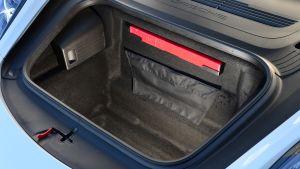
image
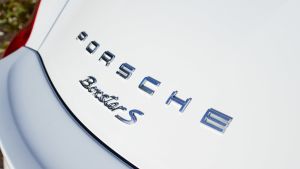
image
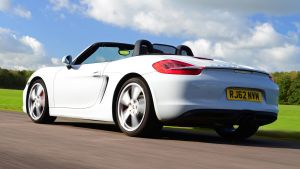
image
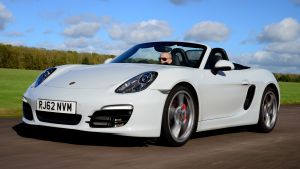
image
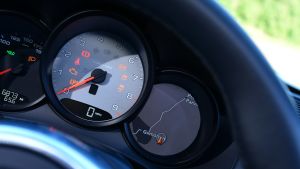
image

image
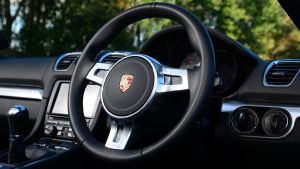
image
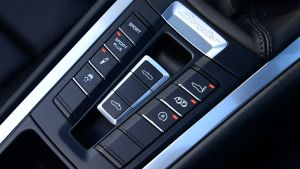
image
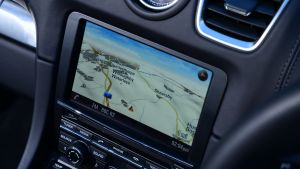
image
The third-generation Porsche Boxster was unveiled in January 2012, with UK sales starting four months later. Buyers could choose between the 261bhp 2.7-litre Boxster and the 310bhp 3.4-litre Boxster S. Both models came with a six-cylinder engine and a six-speed manual gearbox as standard, with a seven-speed dual-clutch ‘PDK’ automatic an option.
The Boxster GTS arrived in May 2014 with a 325bhp 3.4-litre engine and standard-fit Porsche Active Suspension Management (PASM). The final Boxster 981 variant arrived in July 2015: the Spyder, with a 3.8-litre engine rated at 370bhp. Priced from £60,049, the Spyder’s top speed was 180mph compared with 162mph for the Boxster and 173mph for the Boxster S and GTS.
Don’t be fooled into thinking that you must have the Boxster S 3.4 over the cheaper, less powerful Boxster 2.7. These Porsches are proof that driving pleasure isn’t about outright power, although the chassis is so accomplished that not having as much grunt as possible can seem like a waste.
Only one in three Boxsters features a manual gearbox; the PDK alternative is brilliant, and we’d recommend either, so it’s just down to personal preference.
As standard the Boxster features an Alcantara interior, 18-inch wheels, stop-start and a Sports mode, an electric roof and seven-inch touchscreen display. The Boxster S adds 19-inch alloys, part-leather trim and xenon headlights. The GTS has 20-inch alloys and active lighting, along with sports seats trimmed in leather.
The Boxster is the most dynamically adept car in its class, but since 2015 it’s the Mazda MX-5 that’s turned our heads, scooping the Best Roadster category in our New Car Awards. Cheaper and less powerful, the Mazda is still an absolute blast to drive. If you want something a bit more powerful and premium, the Audi TT Roadster, BMW Z4 and Mercedes SLK are all two-seat roadsters, with the latter two being coupé-cabriolets for added year-round usability – although the Audi is the only one available with the security of four-wheel drive.
If a sharp driving experience is your priority then the Lotus Elise should be on your shortlist, too, while you should also think about the Nissan 370Z Roadster. It has plenty of grunt, but a so-so interior and lack of refinement some may find disappointing.
Model codes
The first Boxster was codenamed 986 by Porsche, and its successor was the 987. The Mk3 is the 981.
Suspension
Adding PASM lowers the Boxster by 10mm, while the GTS is 20mm lower than the standard car for even sharper handling.
Interior
Some early door cards were known to separate because of faulty glue, but most have already been fixed under warranty.
Lights
The headlight pods have a fault that can see them delaminate, which looks like cracking around the edges. New ones cost in excess of £1,000.

image

image

image

image

image

image

image

image

image

image
Swathed in premium materials and built to a superb standard, the Boxster’s cabin feels special and is generally very user-friendly, aside from the positioning of some minor switchgear. The seats are excellent; heated items are an extra worth having for added top-down comfort on chilly days. Other extras to look for include Bluetooth, parking sensors and a DAB radio. Carrying capacity is pegged at 280 litres; that’s 150 in the nose and 130 in the boot behind the engine, so be prepared to pack around this split.
Check out the latest used prices for the Porsche Boxster on our sister site Buyacar.
Boxster 981s are serviced every two years or 20,000 miles. All cars have a six-cylinder petrol engine, so costs are the same regardless of derivative. Official Porsche dealers offer fixed-price maintenance, with the first six services costing £615, £975, £775, £795, £525, then £1,095 at 12 years or 120,000 miles.
Brake fluid is required at every service, new spark plugs every other service, while every third service sees a new air filter and serpentine belt needed. All Boxster engines are chain-driven, so there are no cambelts to replace.
An army of independent specialists can help trim maintenance costs and, as an example, RPM Technik (rpmtechnik.co.uk) charges £290 for a 20,000-mile service, £390 at 40,000 miles and £636 at 60,000 miles, while the 120,000-mile service is pegged at £825 (or £959 for PDK-equipped cars).
Porsche didn’t launch a single recall campaign for any generations of the Boxster until March 2019, since when there have been four actions, all of which have been aimed largely at the Boxster Mk4 (also known as the 718).
However, a recall that was issued in August 2019 did also affect the Boxster Mk3, which we’re covering here, along with most of the other models in Porsche’s range. In all, 1,810 cars were caught up in the campaign; the reason for this was that they were fitted with faulty electronics in their airbag control units. The solution from Porsche was to fit a new control unit and to also update the controlling software. Boxsters built between June 2015 and June 2016 could have been affected by this so if you’re looking at one of these, it’s worth checking the car went in to have the recall work done.
As a niche model, the Boxster Mk3 hasn’t appeared in our Driver Power polls, but Porsche’s second-place finish out of 30 in our 2020 brand survey for used cars is impressive. With first-place finishes for the drivetrains and handling, the firm’s cars clearly age well. Second-to-last place for running costs indicates deeper-than-average pockets are required to run a used Porsche, but reliability was very highly rated.
When the Boxster Mk3 arrived in 2012 we liked it so much that it was named our Roadster of the Year in our New Car Awards – and then again in 2013 and 2014. The Boxster also scooped the Best Roadster category in our 2014 Used Car Awards, and we said: “Choose any of the three generations of Porsche Boxster and you’ll be getting an exceptional second-hand performance car that’s capable of delivering reliable, high-speed service... The Boxster isn’t just quick, it’s also brilliantly balanced and rides very well. Indeed, it’s hard to think of a more alluring performance car for the second-hand buyer”. This sums the Boxster up really, because nothing has changed in the meantime.
Continue reading...
Porsche now sells more SUVs than it does sports cars, but the company hasn’t forgotten its roots, and models such as the Boxster still put the emphasis on driving thrills. Beautifully made, a dream to drive and usually very reliable, the third-generation Boxster needn’t be costly to run and is surprisingly practical. Hugely appealing as a new buy, the Boxster is even more alluring when bought used – if you do your homework.
Models covered
- Porsche Boxster Mk3 (2012-2016) – Mk3 entry point to Porsche’s sports car range offers reliable entertainment.
- Porsche Boxster Mk2 (2005-2012) - The 987 Bosxter arrived in 2005, but it’s now a great used roadster.
Used Porsche Boxster Mk3

image

image

image

image

image

image

image

image

image

image
History
The third-generation Porsche Boxster was unveiled in January 2012, with UK sales starting four months later. Buyers could choose between the 261bhp 2.7-litre Boxster and the 310bhp 3.4-litre Boxster S. Both models came with a six-cylinder engine and a six-speed manual gearbox as standard, with a seven-speed dual-clutch ‘PDK’ automatic an option.
The Boxster GTS arrived in May 2014 with a 325bhp 3.4-litre engine and standard-fit Porsche Active Suspension Management (PASM). The final Boxster 981 variant arrived in July 2015: the Spyder, with a 3.8-litre engine rated at 370bhp. Priced from £60,049, the Spyder’s top speed was 180mph compared with 162mph for the Boxster and 173mph for the Boxster S and GTS.
Which one should I buy?
Don’t be fooled into thinking that you must have the Boxster S 3.4 over the cheaper, less powerful Boxster 2.7. These Porsches are proof that driving pleasure isn’t about outright power, although the chassis is so accomplished that not having as much grunt as possible can seem like a waste.
Only one in three Boxsters features a manual gearbox; the PDK alternative is brilliant, and we’d recommend either, so it’s just down to personal preference.
As standard the Boxster features an Alcantara interior, 18-inch wheels, stop-start and a Sports mode, an electric roof and seven-inch touchscreen display. The Boxster S adds 19-inch alloys, part-leather trim and xenon headlights. The GTS has 20-inch alloys and active lighting, along with sports seats trimmed in leather.
Alternatives to the Porsche Boxster
The Boxster is the most dynamically adept car in its class, but since 2015 it’s the Mazda MX-5 that’s turned our heads, scooping the Best Roadster category in our New Car Awards. Cheaper and less powerful, the Mazda is still an absolute blast to drive. If you want something a bit more powerful and premium, the Audi TT Roadster, BMW Z4 and Mercedes SLK are all two-seat roadsters, with the latter two being coupé-cabriolets for added year-round usability – although the Audi is the only one available with the security of four-wheel drive.
If a sharp driving experience is your priority then the Lotus Elise should be on your shortlist, too, while you should also think about the Nissan 370Z Roadster. It has plenty of grunt, but a so-so interior and lack of refinement some may find disappointing.
What to look for
Model codes
The first Boxster was codenamed 986 by Porsche, and its successor was the 987. The Mk3 is the 981.
Suspension
Adding PASM lowers the Boxster by 10mm, while the GTS is 20mm lower than the standard car for even sharper handling.
Interior
Some early door cards were known to separate because of faulty glue, but most have already been fixed under warranty.
Lights
The headlight pods have a fault that can see them delaminate, which looks like cracking around the edges. New ones cost in excess of £1,000.

image

image

image

image

image

image

image

image

image

image
Interior
Swathed in premium materials and built to a superb standard, the Boxster’s cabin feels special and is generally very user-friendly, aside from the positioning of some minor switchgear. The seats are excellent; heated items are an extra worth having for added top-down comfort on chilly days. Other extras to look for include Bluetooth, parking sensors and a DAB radio. Carrying capacity is pegged at 280 litres; that’s 150 in the nose and 130 in the boot behind the engine, so be prepared to pack around this split.
Prices
Check out the latest used prices for the Porsche Boxster on our sister site Buyacar.
Running costs
Boxster 981s are serviced every two years or 20,000 miles. All cars have a six-cylinder petrol engine, so costs are the same regardless of derivative. Official Porsche dealers offer fixed-price maintenance, with the first six services costing £615, £975, £775, £795, £525, then £1,095 at 12 years or 120,000 miles.
Brake fluid is required at every service, new spark plugs every other service, while every third service sees a new air filter and serpentine belt needed. All Boxster engines are chain-driven, so there are no cambelts to replace.
An army of independent specialists can help trim maintenance costs and, as an example, RPM Technik (rpmtechnik.co.uk) charges £290 for a 20,000-mile service, £390 at 40,000 miles and £636 at 60,000 miles, while the 120,000-mile service is pegged at £825 (or £959 for PDK-equipped cars).
Recalls
Porsche didn’t launch a single recall campaign for any generations of the Boxster until March 2019, since when there have been four actions, all of which have been aimed largely at the Boxster Mk4 (also known as the 718).
However, a recall that was issued in August 2019 did also affect the Boxster Mk3, which we’re covering here, along with most of the other models in Porsche’s range. In all, 1,810 cars were caught up in the campaign; the reason for this was that they were fitted with faulty electronics in their airbag control units. The solution from Porsche was to fit a new control unit and to also update the controlling software. Boxsters built between June 2015 and June 2016 could have been affected by this so if you’re looking at one of these, it’s worth checking the car went in to have the recall work done.
Driver Power owner satisfaction
As a niche model, the Boxster Mk3 hasn’t appeared in our Driver Power polls, but Porsche’s second-place finish out of 30 in our 2020 brand survey for used cars is impressive. With first-place finishes for the drivetrains and handling, the firm’s cars clearly age well. Second-to-last place for running costs indicates deeper-than-average pockets are required to run a used Porsche, but reliability was very highly rated.
Verdict
When the Boxster Mk3 arrived in 2012 we liked it so much that it was named our Roadster of the Year in our New Car Awards – and then again in 2013 and 2014. The Boxster also scooped the Best Roadster category in our 2014 Used Car Awards, and we said: “Choose any of the three generations of Porsche Boxster and you’ll be getting an exceptional second-hand performance car that’s capable of delivering reliable, high-speed service... The Boxster isn’t just quick, it’s also brilliantly balanced and rides very well. Indeed, it’s hard to think of a more alluring performance car for the second-hand buyer”. This sums the Boxster up really, because nothing has changed in the meantime.
Continue reading...
